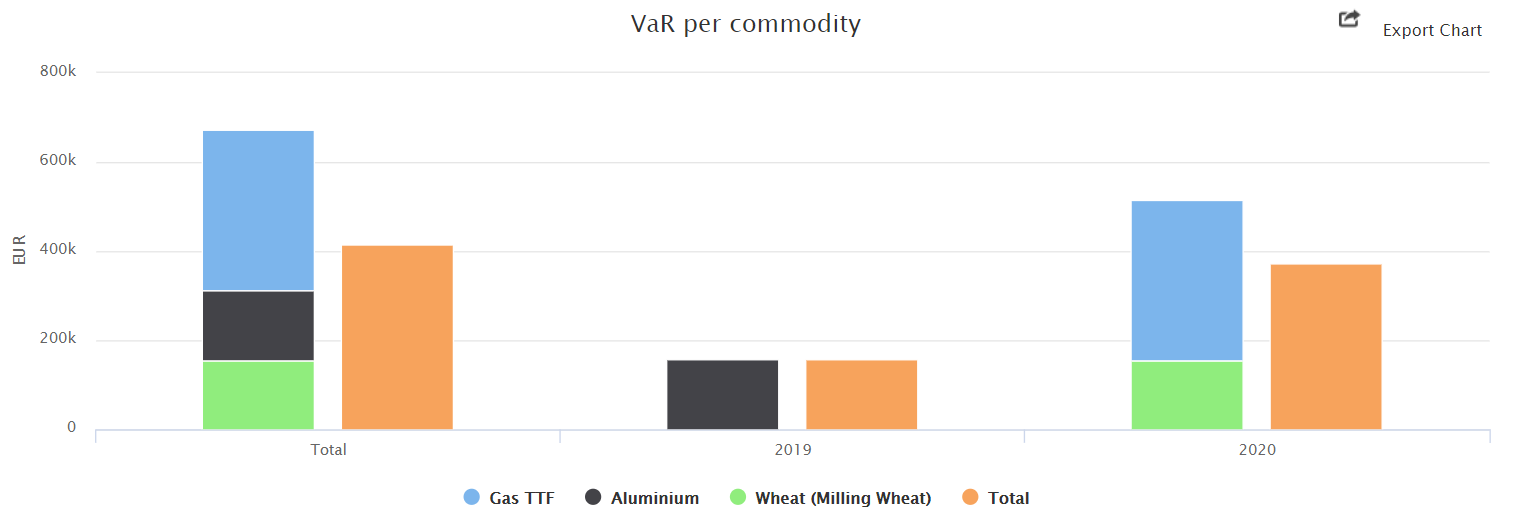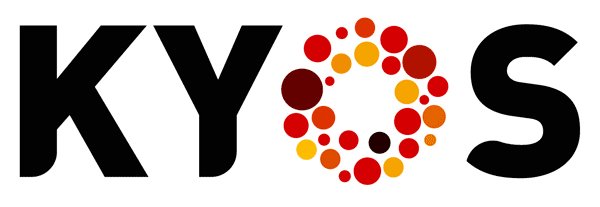Value-at-Risk
- Calculate the market risk of a complete portfolio
- Locate and analyse the key risk drivers
- Enjoy user-friendly interface and fast calculations
- Choose between different methodologies
Benefits
1. Foresee potential losses
Value-at-Risk calculates by how much the market value of the portfolio may change over a given horizon with a certain confidence level. For example, a 10-day 95% VaR of 1 mln USD means that the drop in market value over a 10-day period will not be more than 1 mln USD in 95% of the cases. Besides that, the KYOS KyVaR model includes positions arising from all contracts and assets (power plants, gas storage, swing contract). It is possible to compare the VaR with the market risk on previous trading days, thereby highlighting potential trends. The model displays the VaR in a flexible format, so the user can identify the main sources of risk: per book, per commodity or per period.

2. Locate the drivers of market risk
The main drivers for the Value-at-Risk are (i) the positions and (ii) the price volatility of commodity markets. The VaR model shows both the positions and the volatility per month, giving full insight in the risk drivers.
3. Check if trading limits are not breached
Each day the model compares the calculated VaR with the appropriate VaR limit. You can set the limit on the total portfolio, but also on a sub-level (book, commodity, etc.). In case a VaR limit is breached, a clear signal is given which can be used to reduce market risk.
 Loading a qoute..
Loading a qoute..
Features Value-at-Risk
All exposures are included in the VaR model: not only contracts, but also positions from energy assets including power plants, swing contracts and gas storages.
Of course we have made sure to fully embed KyVaR in the KYOS Analytical Platform. Automated data feeds ensure that you get up-to-date VaR calculations every day.
Methodology
The standard VaR model in the KYOS Analytical Platform is based on the variance-covariance matrix. It is referred to as parametric VaR, normal VaR or varcovar VaR. It is actually the most easy to use and interpret results. As an input it requires the volatilities and correlations of all monthly prices. Historical market prices from the basis to automatically calculate these parameters. The user may overwrite the volatility estimates, either to test sensitivities or because he has more accurate estimates from option markets.
As alternative methodologies, KYOS offers the Monte Carlo simulation approach and the historical simulation approach. Especially when the market price returns do not have a very nice Normal distribution, this may be more accurate. For the Monte Carlo simulation approach, we are using the price simulations from KySim. For the historical simulation approach, the model takes the variations in market prices directly from the history, without any distribution assumption; that is therefore the non-parametric VaR approach.
Trusted by organizations all over the world
Other Solutions
Software - Energy Analytics
Do you need help with valuing a renewable investment project, PPAs, battery energy storage, power plant, electrolyser, gas storage, - or you need bankable price forecasting services, risk management advisory or an E-/CTRM system?
Read more ›Software - C/ETRM
Customize your own C/ETRM system, with advanced risk metrics and reporting tools. Bring together your physical commodity positions with financial contracts. This provides not only a complete picture of purchases and sales, but also of the financial risks you are exposed to.
Read more ›Price Analytics
Market prices, market price forecasts and simulations for short and long-term are essential ingredients in energy and commodity management. KYOS offers a suite of functions and quant models to create and analyze all these price series.
Read more ›Advisory & Data Services
KYOS Energy Consulting offers a wide range of services to support companies with managing their (renewable) production position. Our expert services range from a one-off deal valuation to a complete solution for the risk management of a portfolio of renewable generation assets and contracts.
Read more ›





















































































